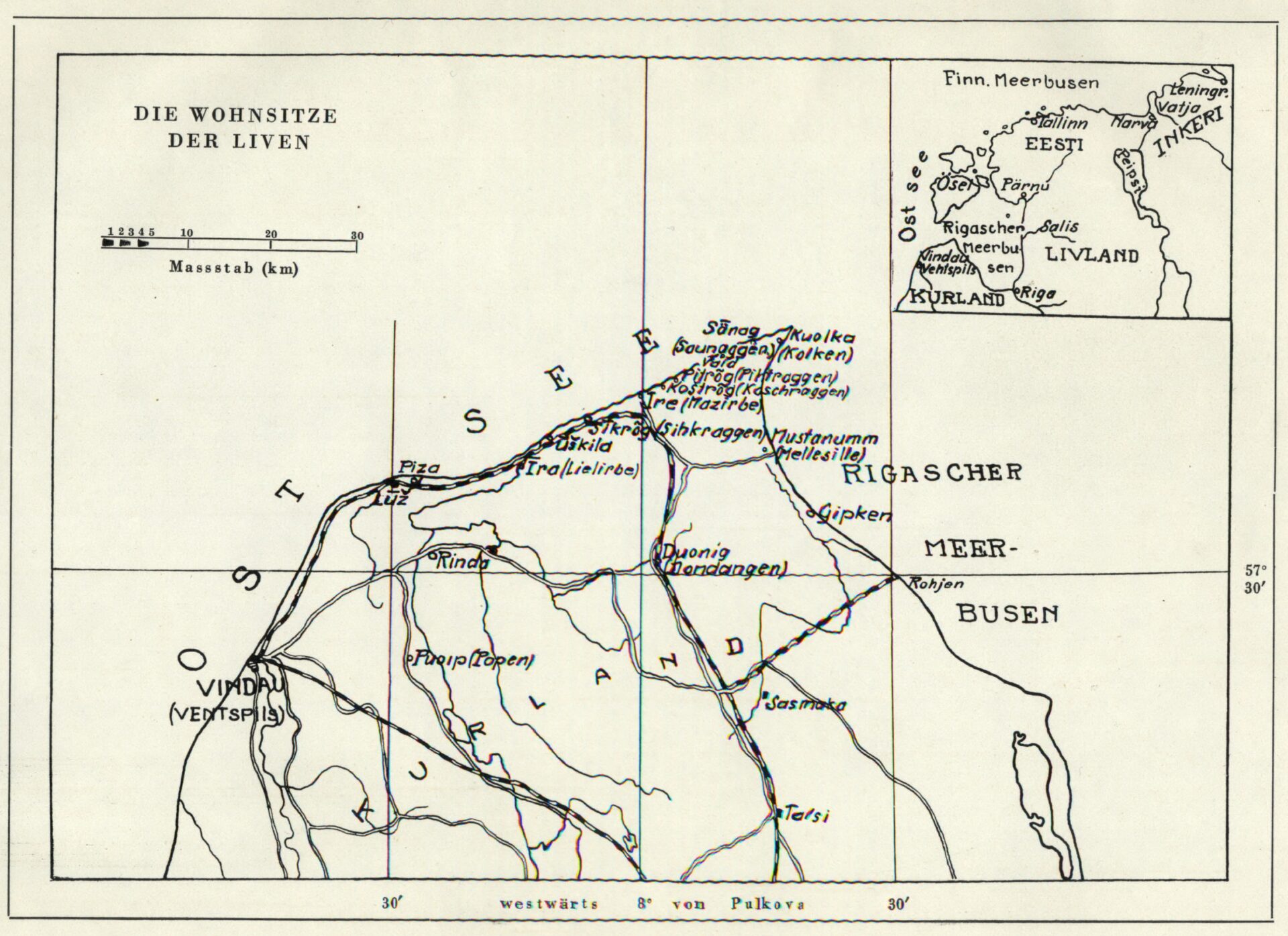
Livonian
Ī’žkillijid / Vowels
Livonian is rich in polyphthongs. These include:
a) diphthongs, e.g., kierdõ ’quickly’, kīerdõt ’twisted’, tierā ’grain’, luini ’bony’, täuž ’full’, tū’ontõ ’thousand’, laigā ’wide’;
b) triphthongs, e.g., kieuž ’rope’, tieudõ ’to know’, ruoikõ ’to hurry’, suoimõ ’to curse’, sūoimõb ’(s/he) curses’, kuoigīd ’ships’.
As the examples show, both types of polyphthongs can have a long or short first component, cf., e.g., ie in kierdõ ’quickly’ and īe in kīerdõt ’twisted’, uoi in suoimõ ’to curse’ and ūoi in sūoimõb ’(s/he) curses’. The final component can also be long. For example, if there is a short vowel in the second syllable, then i and u are long in diphthongs like ai ei ui ou õu etc. Note: In such cases vowel length is not marked with a horizontal line in spelling, e.g., aigõ ’to measure’, tõurõz ’dear, expensive’. However, if there is a long vowel in the second syllable, then a polyphthong in the first syllable is short, e.g., liestād ’flounders’, jougūd ’rivers’. In pronunciation, diphthongs can also be formed with vocalized j and v, which, in such cases, are pronounced like i and u, e.g., kǭj ’spoon’, sä’v ’clay’, pi’vḑi ’holiday, festival’.


